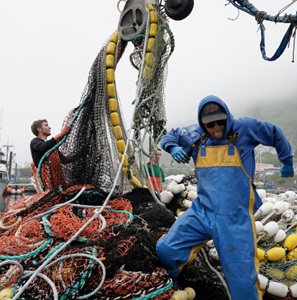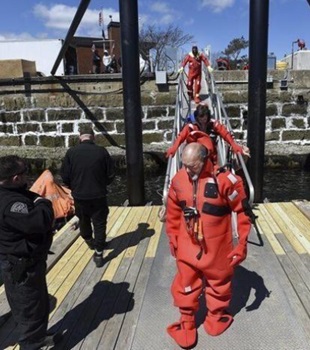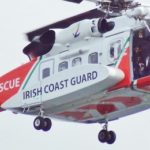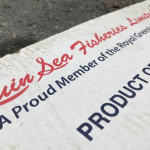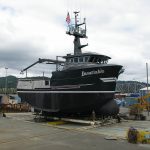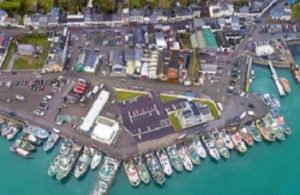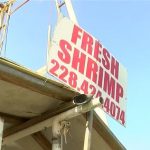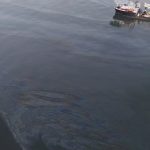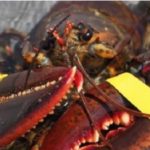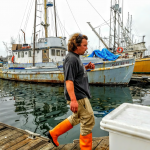Category Archives: Western Pacific
A group of commercial fishermen have ended up before the Supreme Court
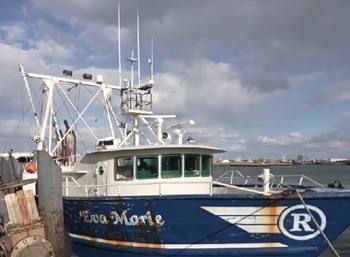 An unforgiving southeast wind cut across Cape May, New Jersey, on a recent Tuesday morning; the 50-mile-per-hour gusts were so strong they created white caps on a section of the bay here that is typically calm. There would be no fishing for Bill Bright and his crew. “We don’t have crop insurance. If the fish don’t show up, there’s no bailout,” the 64-year-old said, standing on the deck of the Eva Marie, an 88-foot-long fishing vessel used to catch herring. As a lifelong fisherman, Bright is used to slow days. But a recent shift in tidal fortunes here has nothing to do with fish and everything to do with the federal government. “What’s at stake for us is our future,” Bright said. For years, fishermen like Bill Bright and his colleague Wayne Reichle have been required to take federal observers on their boats when they set out into the North Atlantic in search of herring. Video , >>click to read<< 19:06
An unforgiving southeast wind cut across Cape May, New Jersey, on a recent Tuesday morning; the 50-mile-per-hour gusts were so strong they created white caps on a section of the bay here that is typically calm. There would be no fishing for Bill Bright and his crew. “We don’t have crop insurance. If the fish don’t show up, there’s no bailout,” the 64-year-old said, standing on the deck of the Eva Marie, an 88-foot-long fishing vessel used to catch herring. As a lifelong fisherman, Bright is used to slow days. But a recent shift in tidal fortunes here has nothing to do with fish and everything to do with the federal government. “What’s at stake for us is our future,” Bright said. For years, fishermen like Bill Bright and his colleague Wayne Reichle have been required to take federal observers on their boats when they set out into the North Atlantic in search of herring. Video , >>click to read<< 19:06
‘Catalytic.’ How a bipartisan bill could save working waterfronts from Cape Cod to Alaska
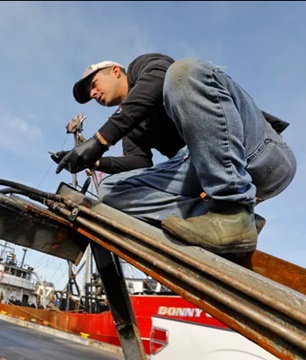
Andrew Spalt climbs the side of the new hydraulic dredge ramp he is installing aboard his boat Miss Emma.
The Working Waterfront Protection Act (S-3180) would establish a grant program that would support working waterfronts in coastal states, including the Great Lakes. The act would provide $20 million annually through fiscal 2028. Commercial fishing cooperatives, working waterfront owners and operators, nonprofit organizations and municipal and state governments would be eligible to apply. Fishing Communities Coalition Coordinator Noah Oppenheim said support is crucial because of pressures facing working waterfront owners and fishing communities nationwide. The coalition represents more than 1,000 independent small boat fishermen and business owners from Maine to Alaska, according to its website. 8 photos, more, >>click to read<< 09:38
Unmanned commercial fishing sailboat grounds on Sugar Beach in Kīhei
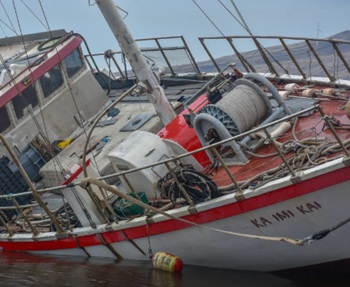 During rainy weather sometime midday on Wednesday, a 46-foot commercial fishing sailboat called Ka Imi Kai broke loose from its anchor or mooring in Māʻalaea Bay and slowly drifted more than a 1/4-mile before grounding on Sugar Beach in Kīhei. More than 24 hours later, the nearly 50-year-old ketch (a double-masted sailboat) remained grounding as tourists floated in the water 30 yards to the north and others walked the beach, many stopping to take pictures of the unusual sight. The communications department of the Hawaiʻi Department of Land and Natural Resources did not have an immediate response about the incident. photos, more, >>click to read<< 09:19
During rainy weather sometime midday on Wednesday, a 46-foot commercial fishing sailboat called Ka Imi Kai broke loose from its anchor or mooring in Māʻalaea Bay and slowly drifted more than a 1/4-mile before grounding on Sugar Beach in Kīhei. More than 24 hours later, the nearly 50-year-old ketch (a double-masted sailboat) remained grounding as tourists floated in the water 30 yards to the north and others walked the beach, many stopping to take pictures of the unusual sight. The communications department of the Hawaiʻi Department of Land and Natural Resources did not have an immediate response about the incident. photos, more, >>click to read<< 09:19
Bluefin Tuna Get Busy Off North Carolina – Inside the $40 billion tuna industry
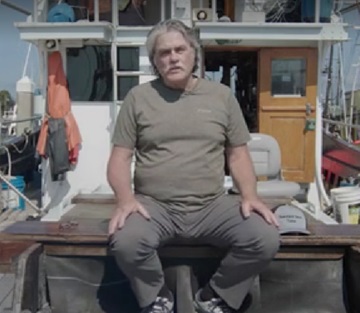 In November 1981, a fleet of briefcase-toting lobbyists, scientists and political negotiators gathered in sunny Tenerife, Spain, to decide the fate of Atlantic bluefin tuna. During the meeting in Tenerife, the American delegation to the International Commission for the Conservation of Atlantic Tunas proposed a disarmingly simple solution: they would draw a line down the middle of the Atlantic Ocean and split the bluefin into two separate stocks. The proposal passed and, eventually, for a variety of reasons, Atlantic bluefin tuna did bounce back. – Inside the $40 billion tuna industry – Once a staple in American homes, canned tuna consumption dropped 45.7% between 2000 and 2021. That is mainly due to changing consumer preferences, sustainability concerns, market consolidation and a major price-fixing scandal between Bumble Bee and StarKist that lasted nearly a decade. Despite this, in 2020, the U.S. remained the top importer. The industry, largely controlled by conglomerates such as Thai Union Group, saw a pandemic-driven demand spike in 2020, but that has since declined. Video, >>click to read<< 16:20
In November 1981, a fleet of briefcase-toting lobbyists, scientists and political negotiators gathered in sunny Tenerife, Spain, to decide the fate of Atlantic bluefin tuna. During the meeting in Tenerife, the American delegation to the International Commission for the Conservation of Atlantic Tunas proposed a disarmingly simple solution: they would draw a line down the middle of the Atlantic Ocean and split the bluefin into two separate stocks. The proposal passed and, eventually, for a variety of reasons, Atlantic bluefin tuna did bounce back. – Inside the $40 billion tuna industry – Once a staple in American homes, canned tuna consumption dropped 45.7% between 2000 and 2021. That is mainly due to changing consumer preferences, sustainability concerns, market consolidation and a major price-fixing scandal between Bumble Bee and StarKist that lasted nearly a decade. Despite this, in 2020, the U.S. remained the top importer. The industry, largely controlled by conglomerates such as Thai Union Group, saw a pandemic-driven demand spike in 2020, but that has since declined. Video, >>click to read<< 16:20
Single Snow Crab Gets Auctioned for Record 10 Million Yen in Japan
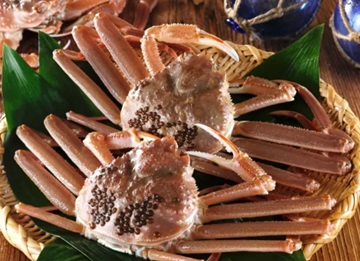 Snow crab season in Japan kicked off with a record auction this week, after a single 1.2-kilogram snow crab sold for an incredible 10 million yen (about $66,000 USD) at the Hamasaka fishing port in the coastal town of Shinonsen. The crab was a highly sought-after “matsuba-gani,” which refers to male snow crabs that are found in the Sanin region along the south-western coast of Japan’s main island Honshu. The lucky buyer was restaurant owner Ryosuke Uemura, 47, proprietor of the Ryouriya Uemura restaurant in the Chuo Ward of Kobe, who placed the winning bid on Nov 6., the first day of snow crab season.”I wanted to get one on day one, no matter what. >>click to read<< 07:45
Snow crab season in Japan kicked off with a record auction this week, after a single 1.2-kilogram snow crab sold for an incredible 10 million yen (about $66,000 USD) at the Hamasaka fishing port in the coastal town of Shinonsen. The crab was a highly sought-after “matsuba-gani,” which refers to male snow crabs that are found in the Sanin region along the south-western coast of Japan’s main island Honshu. The lucky buyer was restaurant owner Ryosuke Uemura, 47, proprietor of the Ryouriya Uemura restaurant in the Chuo Ward of Kobe, who placed the winning bid on Nov 6., the first day of snow crab season.”I wanted to get one on day one, no matter what. >>click to read<< 07:45
Maui Wildfire Photos And Updates, Lahaina And Kula
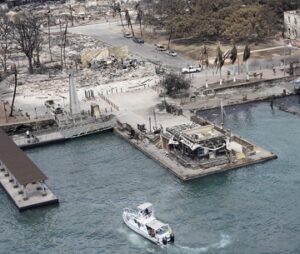 The number of people killed in the Maui wildfires increased to 93 on Saturday, with two of them identified, according to an update from Maui County. The fact that only two people were identified underscores the difficulties facing search and recovery crews who must carefully pick through rubble as more than 2,000 buildings were destroyed or damaged. Maui officials urged people with missing family members to go to do a DNA test for authorities. The county has set up a family assistance center at the Kahului Community Center to coordinate efforts to find people who remain unaccounted for. “We need to find your loved ones,” Maui Police Chief John Pelletier said earlier Saturday during a news conference at which the death toll was raised to 89. “The remains we’re finding is through a fire that melted metal. We have to do rapid DNA to identify every one of these 89.” >click to read< 09:36
The number of people killed in the Maui wildfires increased to 93 on Saturday, with two of them identified, according to an update from Maui County. The fact that only two people were identified underscores the difficulties facing search and recovery crews who must carefully pick through rubble as more than 2,000 buildings were destroyed or damaged. Maui officials urged people with missing family members to go to do a DNA test for authorities. The county has set up a family assistance center at the Kahului Community Center to coordinate efforts to find people who remain unaccounted for. “We need to find your loved ones,” Maui Police Chief John Pelletier said earlier Saturday during a news conference at which the death toll was raised to 89. “The remains we’re finding is through a fire that melted metal. We have to do rapid DNA to identify every one of these 89.” >click to read< 09:36
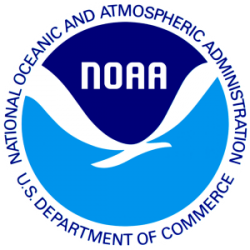
NOAA outlines sweeping plan to boost the nation’s seafood industry
The National Oceanic and Atmospheric Administration has released a sweeping five-year plan to prioritize and promote the country’s commercial fishing industry. NOAA Fisheries announced its National Seafood Strategy on Wednesday. The agency said in a press release that the plan will “outline the direction” of the country’s seafood sector. It’s the first time NOAA has released an overall strategy aimed at addressing industry needs – the agency says it will complement other federal policies that are already in place. >click to read< 11:29
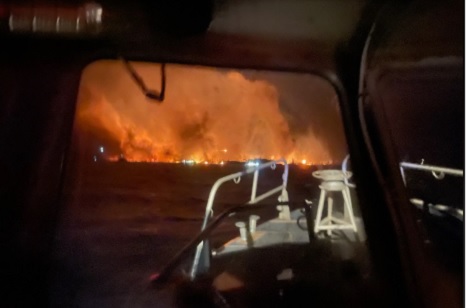
Coast Guard, agencies continue response to Western Maui Fires
The Coast Guard, along with federal, state, and local partners continue to respond following the Lahaina wildfires in Maui, HI. A total of 17 lives were saved from the water and 40 survivors were located ashore by Coast Station Maui boat crews. The Coast Guard has no reports of missing persons in the water, however Coast Guard aircrews and surface assets continue search and rescue operations. “Today, our assets remain actively engaged in the search and rescue response and our responders are operating and searching as though there may still be Guard survivors in need of assistance,” said Capt. Aja L. Kirksey, Sector Commander of Coast Guard Sector Honolulu. Photos, >click to read< 19:48
Hawaii fires: At least 36 killed as flames sweep through Maui
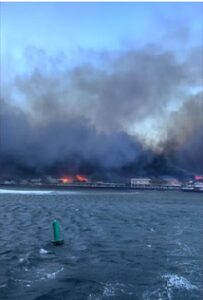 At least 36 people have died as fast-moving wildfires tear through the Hawaiian island of Maui, officials say. The deaths in the city of Lahaina, the island’s main tourist destination, came as strong winds from a distant hurricane fanned the flames. The fire is one of several ongoing blazes that have burnt entire neighborhoods to the ground. Thousands of people have been forced to evacuate their homes and a state of emergency has been declared. A huge search and rescue operation is under way, with some people still unaccounted for. The fires earlier drove people to jump into the city’s harbour to escape the flames and smoke. Fourteen people were rescued after jumping in, officials said. Video, photos,>click to read< 08:01
At least 36 people have died as fast-moving wildfires tear through the Hawaiian island of Maui, officials say. The deaths in the city of Lahaina, the island’s main tourist destination, came as strong winds from a distant hurricane fanned the flames. The fire is one of several ongoing blazes that have burnt entire neighborhoods to the ground. Thousands of people have been forced to evacuate their homes and a state of emergency has been declared. A huge search and rescue operation is under way, with some people still unaccounted for. The fires earlier drove people to jump into the city’s harbour to escape the flames and smoke. Fourteen people were rescued after jumping in, officials said. Video, photos,>click to read< 08:01
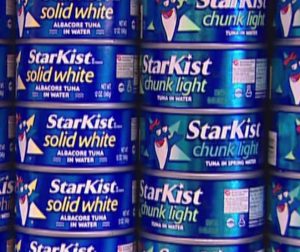
NOAA’s Sanctuary Expansion Proposal: ‘The nail in the coffin’ of American Samoa’s tuna industry
A regional fishery council warned that the Biden administration’s plan to block off the U.S territorial waters in the Pacific would be the end of American Samoa’s tuna canning industry and quash the culture which the federal government claims to protect. While commercial fishing is currently allowed within 50 to 200 miles of the Pacific Remote Islands Marine National Monument, the National Oceanic Atmospheric Agency’ssanctuary expansion proposal would completely cover the U.S exclusive economic zone, prohibiting commercial fishing by U.S fishermen in U.S waters. “For more than 30 years, American Samoa-based purse seiners and Honolulu-based longliners operated in the waters of the Pacific Remote Islands Area until the establishment of the PRIMNM in 2006,” the Western Pacific Fishery Management Council said. “This new action will force U.S purse seiners to fish farther away from Pago Pago Harbor and transport their catch to Mexico and Ecuador instead of the StarKist Samoa cannery, which serves as the backbone of American Samoa’s economy,” the council added.>click to read< 15:45
Athearn Marine Agency Boat of the Week: 60′ Duckworth Steel Longliner/with permits, Cat 3406T Diesel,
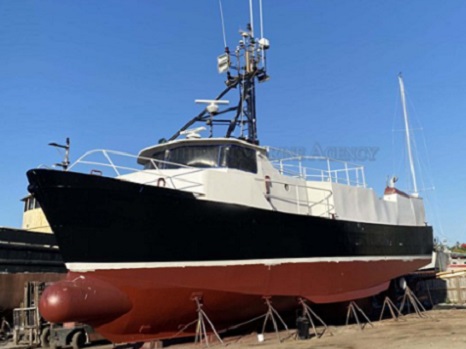 To review specifications, information, and 24 photos’, >click here<, To see all the boats in this series >click here< 11:45
To review specifications, information, and 24 photos’, >click here<, To see all the boats in this series >click here< 11:45
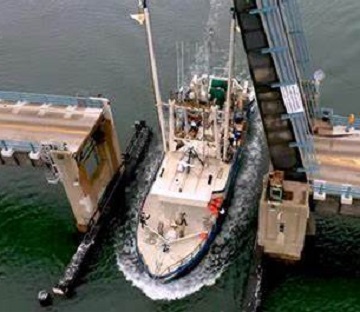
Cause of Action Institute: Supreme Court to Hear Fishermen’s Chevron Challenge
The justices will review Loper Bright v. Raimondo. The fishermen, represented by former Solicitor General Paul Clement and lawyers from Cause of Action Institute, petitioned the Court in November to overrule a funding scheme that would force them to hand over 20 percent of their pay to third-party at-sea monitors they must bring on their boats—a mandate that Congress never approved by statute. Amicus briefs in support of the fishermen’s case were filed by 38 organizations and individuals, including one signed by 18 state attorneys general. “The Supreme Court has an opportunity to correct one of the most consequential judicial errors in a generation. Video, lots of noteworthy links with lots of info. >click to read< 19:00

Celebrate Whale Week with NOAA Fisheries: A message from Janet Coit, Assistant Administrator
At NOAA Fisheries, our team of dedicated scientists and managers is responsible for the health and sustainability of more than 30 whale species in U.S and territorial waters. Every year, we spend a week taking a deeper dive to share our whale expertise. This year is particularly notable because it is the 50th anniversary of the Endangered Species Act. Some of the most recognizable whales—North Atlantic right whales, Southern Resident killer whales, and Cook Inlet belugas—are at the top of our Species in the Spotlight initiative. >click to read< 18:33

NOAA Fisheries Releases 2022 Status of Stocks
The National Oceanic and Atmospheric Administration’s (NOAA) National Marine Fisheries Service (NMFS) is pleased to present the 2022 Report to Congress on the Status of U.S. Fisheries. This report highlights the achievements of NMFS, the eight Regional Fishery Management Councils (Councils), and our other partners. In 2022, the number of stocks on the overfishing list decreased slightly, the number of overfished stocks also slightly decreased, and two stocks were rebuilt. We continue to implement management measures that will end overfishing, rebuild overfished stocks, and sustain our fisheries for future generations. Sound science, an increasing focus on climate-informed management, effective enforcement, meaningful partnerships, and public engagement drive our success in managing the most sustainable fisheries in the world. >click to read< 11:58
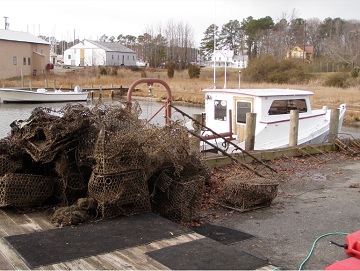
VIMS to lead national program for managing derelict fishing gear
The National Oceanic and Atmospheric Administration has recommended William & Mary’s Virginia Institute of Marine Science as home base for a new national program focused on protecting U.S. coastal waters from derelict fishing gear. The $8 million provided by NOAA to implement the four-year program is the largest single grant award in VIMS’ 83-year history. Many of these dollars will be passed on to program partners through an annual grant competition. Formally known as the Nationwide Fishing TRAP Program — “TRAP” for Trap Removal, Assessment & Prevention — the effort includes funding for commercial and tribal fishers to remove derelict pots from Virginia’s waters. >click to read< 17:46
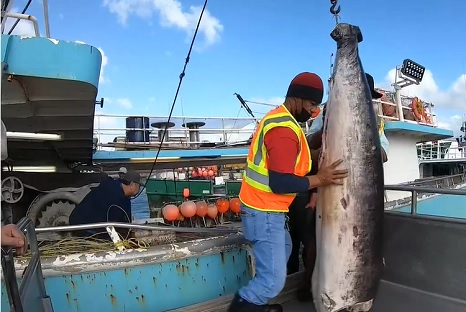
Have you tried the other white meat? … Swordfish
Hawaii’s commercial fishing industry is asking Hawaii families to consider (or reconsider) a fish that’s fallen out of favor over the years. While Hawaii is known for its ahi and other tuna, swordfish is actually a big part of the commercial fishing industry in the islands. So much so that the Hawaii Longline Association says its fleet provides about half the country’s demand for swordfish, caught more than 1,000 miles north of Hawaii. But while more than 80% of the fresh fish sold in Hawaii stays here, that’s not the case for swordfish. “It’s kind of reverse, most goes to the mainland instead of retain here locally,” said Eric Kingma, executive director of the Hawaii Longline Association. Video, >click to read< 08:49
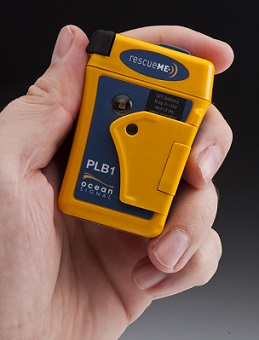
Personal Locator Beacons improve the chance of rescue at sea
A PLB is a personal electronic device that transmits a survivor’s location on or in the water to the Search and Rescue Satellite-Aided Tracking system during an emergency. It’s designed to be carried in a person’s life vest (or elsewhere on their body) and manually activated when the wearer is in distress. PLBs continuously update a survivor’s location. New Year’s Eve is a time of celebration and remembrance. Three years ago, on December 31, 2019, as the new year was being rung in across the lower 48 states, a tragedy was playing out in icy Alaskan waters. F/V Scandies Rose, with seven crew members aboard, capsized and sank before reaching safety. >click to read< Then, there is survivor John Aldridge, a crewmember of the 44-foot lobster  vessel Anna Mary was last seen aboard the boat during his watch relief at 9 p.m., Tuesday, while the vessel was underway off Montauk, N.Y. How many times have you read of or heard of a fisherman going overboard, only to watch an unsuccessful chain of events involving fruitless search and rescue operations to see them become possible recovery operations, and predictably, abandoned after a period of time, dictated by estimates of rate of survival and sea conditions? Way too many.
vessel Anna Mary was last seen aboard the boat during his watch relief at 9 p.m., Tuesday, while the vessel was underway off Montauk, N.Y. How many times have you read of or heard of a fisherman going overboard, only to watch an unsuccessful chain of events involving fruitless search and rescue operations to see them become possible recovery operations, and predictably, abandoned after a period of time, dictated by estimates of rate of survival and sea conditions? Way too many.
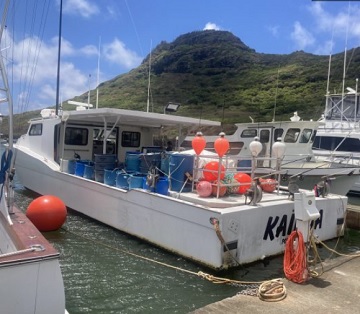
Kauai Fishermen Bring Deep-Sea Shrimp Back to the Dinner Table
Hawaii’s sweeping variety of seafood is the stuff of greatness. But consumers know some local seafood is hard to come by. A Kauai-based vessel is now pursuing one such delicacy of the deep: “amaebi,” certain marine shrimp belonging to the genus Heterocarpus. “They’re more delicate than other shrimp you can buy,” said Devin Silva, who sails out of Nawiliwili Harbor with his father Vinnie Silva. “They’re very juicy … they’re coming up from (1,500 to 3,000) feet deep.” Amaebi are indeed prized for their sweet flesh and large size. However, only a handful of boats now participate in the Hawaii fishery. Devin persuaded his father to hunt the little-known crustacean in late 2021, after learning the craft from Kauai’s last-known shrimper, retired commercial fisherman Ernest Caires. Photos, >click to read< 13:31
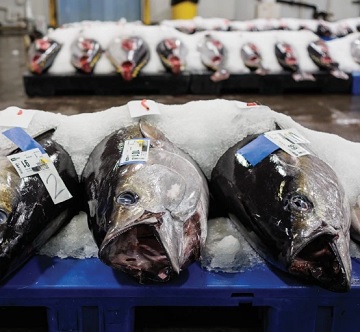
The Honolulu Fish Auction Celebrates Its 70th Anniversary
Commercial fishing in Hawai’i was banned during World War II and slowly resurfaced by the early 1950s. The United Fishing Agency launched the Honolulu Fish Auction on Aug. 5, 1952, and it celebrated its 70th anniversary this year at Honolulu’s Pier 38. The agency says it’s the only fish auction in Hawaii and the only large-scale tuna auction in the Pacific this side of Tokyo. Michael Goto, who has been running the auction for a decade, says seafood is a much bigger industry in Hawaii than many people might realize. >click to read< 10:42
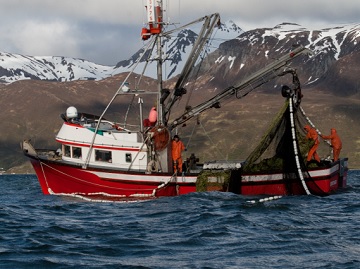
Coast Guard: Additional Actions Needed to Improve Commercial Fishing Vessel Safety Efforts
To improve safety in the extremely dangerous commercial fishing industry, Coast Guard examines fishing vessels’ documents and safety equipment, and conducts outreach to fishers, among other efforts. But, Coast Guard hasn’t fully implemented 17 of 22 statutory requirements to improve commercial fishing vessel safety. For example, Coast Guard hasn’t developed a training program for commercial fishers or re-established an advisory committee on industry safety issues. In addition, Coast Guard doesn’t have a detailed plan to guide their efforts to fully implement the outstanding statutory requirements. Our recommendations address this and more. >click to read< 09:12

Sustaining America’s Fisheries for the Future Act – Partisan Politics Threaten to Sink Reform of Federal Fisheries Law
A divided Congress and the unexpected death of an Alaska congressman appear to have derailed federal legislation meant to improve oversight and management of U.S. fisheries, especially in the face of climate change. The House Natural Resources Committee passed a Democratic-sponsored bill last week to reauthorize the Magnuson-Stevens Fishery Conservation and Management Act for the first time since 2006. While it’s possible the bill will receive a vote on the House floor before the end of the year, its chances of being taken up in the Senate, much less receiving the 60 votes necessary to break a filibuster, is unlikely — at least in this Congress. >click to read< 11:42

Something’s fishy: NOAA urges vigilance after catching fraudulent fishing permit site
NOAA fisheries issued a Notice of fraudulent alert Friday over a website that claimed to process both federal and state fishing permits. It calls itself the Commercial Fishing Permits Center and depending on the permit you want, charges different fees. However, NOAA said the site is in no way affiliated with NOAA or any State. They advise the public to not use the site when applying for a State of federal fishery permit. Links, >click to read< 12:09
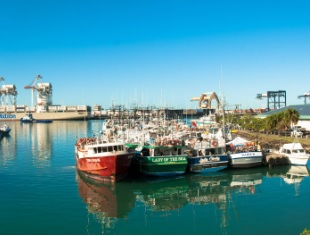
Hawaii Longline Fishery Achieves Global Sustainability Certification
The Hawaii Longline Association’s swordfish, bigeye, and yellowfin tuna fishery has achieved certification for sustainable fishing practices, the Marine Stewardship Council announced today. The fishery is the first Hawaii fishery to enter the MSC program. The MSC Fisheries Standard is a globally recognized standard used to assess if a fishery is well-managed and reflects the most up-to-date understanding of internationally accepted fisheries science and management. The certification follows a rigorous 16-month review carried out by third-party assessment body Control Union UK Limited. >click to read< 16:09
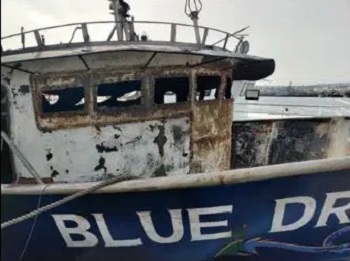
Cause Of Fire Aboard F/V Blue Dragon Determined By NTSB
No injuries or fatalities were reported in connection with the fire that resulted in more than $500,000 in damages to the vessel. The F/V Blue Dragon was under way conducting longline fishing operations in the North Pacific Ocean when the vessel caught fire. The six crewmembers and a National Marine Fisheries Service (NMFS) observer unsuccessfully attempted to fight the fire. They abandoned the vessel and were rescued by a Good Samaritan vessel. The F/V Blue Dragon was later towed to San Pedro, California. On Oct. 25, 2021, the F/V Blue Dragon left Honolulu, Hawaii, to fish for swordfish and tuna. On Nov. 9, while the crew were preparing to retrieve fishing gear, the NMFS observer discovered a fire in the wheelhouse under the console. >click to read< 08:57
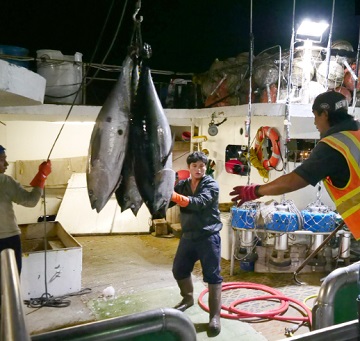
State Supreme Court: Hawaii Longline Industry’s Use of Foreign Crews OK
A new Hawaii Supreme Court decision upholds the local longline fleet’s reliance on some 700 foreign fishermen who can’t legally leave the dock when their boats arrive in Honolulu Harbor. Specifically, the opinion, released Thursday, ruled that it’s OK for state officials to grant commercial licenses to those fishermen confined to the pier, even though they have no legal status in the U.S. It’s permissible, the court said, because Hawaii’s fleet of 140 or so longline vessels fish for ahi and other fresh seafood only in the deep ocean, not in the state-designated waters closer to shore. Meanwhile, the Hawaii Longline Association said it was pleased with the Supreme Court opinion. >click to read< 18:47
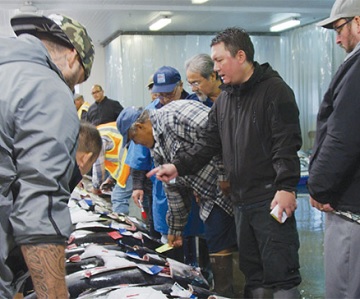
The Big Fish
Whoever said that nothing good ever happens after midnight has never hung out at Pier 38 during the early morning hours. That’s the time when a number of commercial longline fishing boats begin pulling into Honolulu Harbor with crews eager to unload their sizable catch for anyone present to see. And what good things harvested from waters around the Hawaiian Islands do they bring into port? Tens of thousands of pounds of bigeye and yellowfin tuna (‘ahi), striped marlin, mahimahi, pink snapper (‘ōpakapaka), wahoo (ono) and more. Supervising all of this activity while waiting to ring the traditional brass bell, the signal that announces the start of each day’s bidding, is Honolulu Fish Auction manager Michael Goto.>click to continue reading< 08:06






